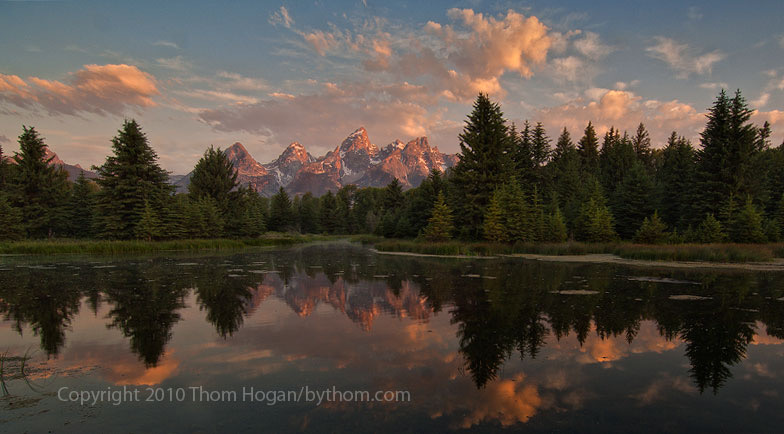
There's great debate over how to post process images like this one, which has a complete reflection. First, when you "mirror" like this, you should strongly consider putting the horizon in center of the frame, something that you don't normally do with landscape photos. Mirrors imply symmetry, and a central line helps reinforce that symmetry. But it's really only a consideration. I can show you mirrored images I've taken where I've moved the horizon high or low in the frame. Always for a good reason, of course. Which is sort of the first point: are you really considering how you want to use the mirror? Most people just react without thinking about what's being said. When water surfaces are this calm, it just "looks cool" and that's all that's motivating them to press the button.
But the real debate about reflections tends to be whether the reflection should be brighter, equal, or darker than the real scene above it. The answer, I think depends upon what you're trying to do. This time around—this isn't the first time I've shown this image—I've processed the image with the reflection being slightly darker. This forces our eyes upward due to the difference in brightness. But some think that in a true mirror like this, the tones should be processed equally, to reinforce the "mirrorness" of the reflection.
I teach that you need to control what the viewer's eye does in your image, so the real question you need to answer is what do you want the eye to do? If you want it to bounce back and forth between scene and reflection, that argues for equal tonality. If you want the eye to move to a detail (the Teton range in this case), this argues for the reflection to be darker and act as a darker mimic to the scene. Note how in this image the mountains stand out: you're drawn to them by my choices in both composition and post-processing.
There's no correct answer here. Great photographs consist of hundreds of choices made by the photographer, some during capture, some during processing. There is no "reality" in photos because of that. None. Starting with when you choose the shutter release through to where you point the camera and how you set it, every decision you make narrows "reality" down to something you saw and wanted to capture. It's your vision, not reality, that is captured.
